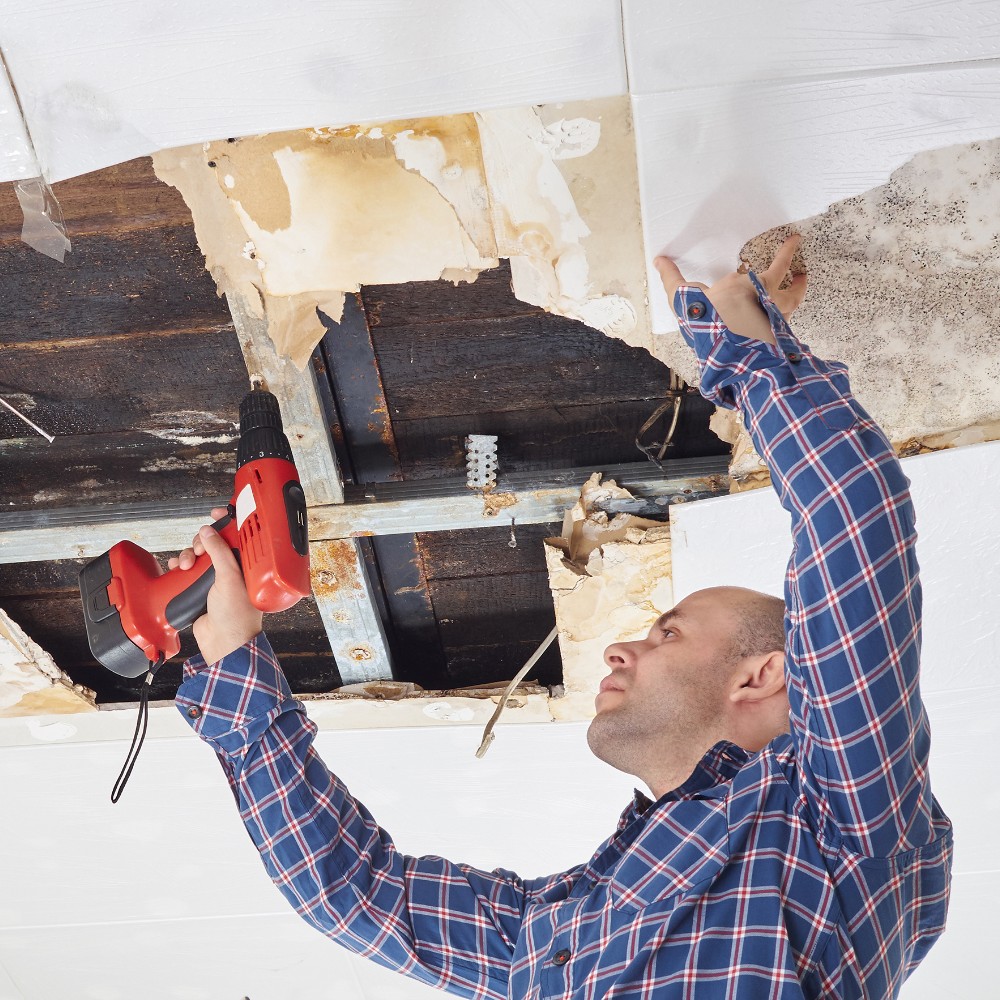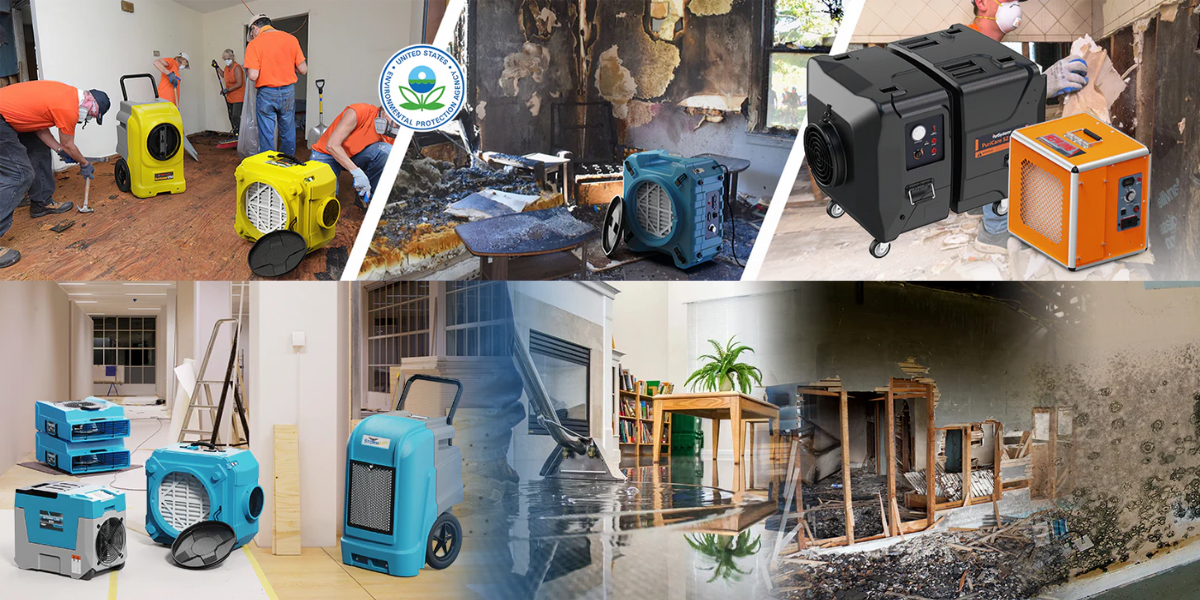How to select the best water damage restoration company
Everything About Water Damages Remediation: Key Truths and Advantages You Should Know
Water damages repair is a vital process that every property owner must comprehend. It entails evaluating the sort of damages, whether clean, gray, or black water, and carrying out an organized restoration technique. Recognizing the signs of water damage early can substantially impact the efficiency of the repair. Recognizing the actions involved and the significance of prompt activity can protect against more issues. What factors should property owners take into consideration when deciding between specialist services and do it yourself techniques?
Recognizing Water Damage: Types and Causes
What factors add to water damages, and just how can they be identified? Water damages can be classified into three primary categories: clean water, gray water, and black water. Clean water originates from resources like damaged pipelines or rainwater, positioning marginal health and wellness risks. Gray water, which may originate from home appliances like dishwashing machines or washing devices, has pollutants that need careful handling. Black water, stemming from sewage or flooding, postures severe health and wellness hazards and needs prompt interest.
The causes of water damages are diverse. Common variables include pipes failings, roofing leaks, all-natural catastrophes, and inadequate drainage systems. In addition, human errors, such as leaving taps running or failing to preserve devices, can intensify the issue. Comprehending these types and triggers is crucial for efficient prevention and remediation techniques, guaranteeing that home owners can take positive steps to protect their homes against the harmful impacts of water damages.
Signs of Water Damage: Exactly How to Recognize Issues Early
Exactly how can one detect the very early indicators of water damage before it escalates into a much more serious problem? Recognizing these problems without delay can save home owners from substantial repairs. Typical indications include noticeable water stains on ceilings or walls, which usually show up as yellowish or brown spots. One more sign is peeling or gurgling paint and wallpaper, recommending dampness beneath the surface. Musty odors can additionally indicate hidden mold development, a straight result of extended moisture. Furthermore, bending or buckling of floorings may suggest excess moisture in the underlying frameworks. Home owners need to frequently check areas vulnerable to water direct exposure, such as restrooms, basements, and kitchen areas, for any signs of leak or moisture. An unexpected increase in utility costs might hint at unseen leakages. By recognizing these early indicators, people can take positive actions to address water damages before it intensifies.
The Water Damages Remediation Refine: Step-by-Step

Next, the drying out process begins, making use of air movers and dehumidifiers to get rid of dampness from walls, floorings, and personal items. After the location is thoroughly dried out, cleansing and sanitization occur to eliminate odors and pollutants.
Lastly, repair work and remediation job is performed, which may consist of replacing broken materials, painting, or redecorating surfaces. water damage restoration. Throughout the procedure, paperwork is maintained for insurance objectives, ensuring that all activities taken are tape-recorded. Each action is vital to bring back the property and ensure a risk-free living atmosphere for residents
Relevance of Timely Repair: Why Performing Quick Issues
Timely restoration adhering to water damage is essential, as hold-ups can result in intensifying concerns such as mold growth and structural damage. Water can rapidly leak into permeable materials, creating an optimal setting for mold spores to prosper. Within 24-48 hours, mold can start to develop, positioning health and wellness risks and further making complex reconstruction initiatives.

In addition, prolonged direct exposure to dampness can weaken the architectural honesty of buildings, bring about expensive repair work and prospective safety hazards. Performing quickly not just minimizes damages yet additionally decreases the general price of restoration. Insurer typically prefer prompt activity, which can assist in smoother cases procedures and quicker financial recovery for homeowner.
Ultimately, focusing on timely the original source remediation preserves residential property worth, boosts security, and promotes a healthier living environment. For these factors, swift action is crucial in the results of water damages, hop over to these guys emphasizing the relevance of addressing problems as quickly as they emerge.
Expert vs. DIY Repair: Disadvantages and pros
When thinking about water damage restoration, property owners frequently evaluate the choices of professional services against DIY techniques. Cost considerations play a significant duty, as professional repair can be more pricey but may use exceptional experience and customized equipment. Each alternative has its cons and pros, impacting both the effectiveness and effectiveness of the restoration procedure.
Expense Factors to consider
While homeowners may think about both professional services and do it yourself methods for water damages repair, each option presents distinct economic ramifications and benefits. Specialist reconstruction solutions frequently feature greater in advance prices due to devices, know-how, and labor. Nevertheless, they can expedite the repair process, potentially decreasing additional damages and connected costs. On the various other hand, DIY remediation may show up much more budget-friendly initially, as it usually includes lower direct costs. Home owners must factor in the possibility for blunders, which might lead to extra extensive damage and greater long-lasting expenses. Inevitably, the option in between specialist and do it yourself repair rests on the house owner's budget plan, the severity of the damages, and their readiness to spend effort and time right into the remediation procedure.
Expertise and Devices
A noteworthy distinction between professional and DIY water damages remediation hinges on the experience and equipment offered for each and every approach. Experts have specialized training and experience, enabling them to analyze damage properly and execute reliable restoration methods. They utilize advanced devices, such as industrial-grade dehumidifiers and moisture detection tools, which can significantly quicken the drying out procedure and prevent more problems like mold growth. In contrast, DIY restoration commonly depends on standard house devices and methods, which this hyperlink might be much less effective and can bring about incomplete fixings. While DIY can save cash, it likewise lugs dangers, including prospective wellness hazards and comprehensive damages if not performed correctly. Eventually, picking in between professional services and do it yourself techniques depends on the seriousness of the damages and the house owner's capacities.
Advanced Techniques in Water Damages Repair
Although water damage remediation has typically depended on conventional methods, progressed methods are currently transforming the market. Innovations such as thermal imaging technology permit reconstruction professionals to spot covert dampness behind wall surfaces and under floors, making sure extensive drying out processes. In addition, making use of high-capacity dehumidifiers speeds up wetness removal, considerably minimizing the risk of mold growth.
Another advancement is the application of antimicrobial therapies, which prevent mold and mildew and germs growth, securing the wellness of residents. Advanced drying tools, including air moving companies and specialized drying mats, boosts air blood circulation and helps with quicker evaporation of wetness.
In addition, real-time monitoring systems currently provide continual assessments of wetness degrees, maximizing and making it possible for prompt interventions reconstruction efforts. These improvements not just boost the effectiveness of water damages restoration yet also add to much better end results for residential properties, minimizing long-term damage and expenses connected with water-related incidents.
Avoiding Future Water Damage: Tips for Homeowners
To stop future water damages, property owners must embrace proactive steps that address possible vulnerabilities in their properties. Routine maintenance of gutters, downspouts, and roof coverings is vital; ensuring these are free from debris can avoid water build-up. Property owners need to additionally evaluate pipes systems for leakages and replace damaged pipelines immediately. Mounting sump pumps in basements can fend off flooding during hefty rains, while making use of water alarm systems can supply early discovery of leakages.
Additionally, securing home windows and doors assists protect against rain breach. Landscaping should route water far from the foundation, employing appropriate grading and drain solutions. House owners may likewise consider waterproofing cellars and crawl areas to additional alleviate dangers. Ultimately, maintaining an updated stock of home items can help in insurance policy claims should damage happen. By implementing these strategies, homeowners can meaningfully minimize the likelihood of water damage and shield their financial investments.
Regularly Asked Questions
How Much Does Water Damage Restoration Usually Price?
Water damage repair commonly costs in between $1,000 and $5,000, depending upon the level of the damage, the sort of products impacted, and the area. Complex cases might exceed this range noticeably, calling for professional analysis.
Will My Insurance Policy Cover Water Damages Reconstruction Expenditures?
Insurance coverage for water damage remediation varies by policy and scenarios. Generally, home owners' insurance may cover problems from unexpected incidents, but exclusions may use. It is suggested to review the policy information or talk to an insurance agent.
The length of time Does the Repair Refine Generally Take?

What Should I Do Instantly After Discovering Water Damages?
Upon discovering water damage, one ought to promptly shut off the water source, remove beneficial items from the afflicted area, and warranty appropriate air flow. Looking for expert help is vital for reliable damage control and reconstruction.
Are There Specific Products That Are Resistant to Water Damage?
Certain products, such as cured timber, concrete, and fiberglass, exhibit better resistance to water damage. In addition, artificial fabrics and waterproof layers boost resilience, providing effective security against moisture and prospective wear and tear in time.
Water damages can be identified into three major groups: clean water, grey water, and black water. When considering water damage restoration, homeowners usually evaluate the options of specialist services versus Do it yourself techniques. While house owners may think about both expert solutions and Do it yourself strategies for water damage restoration, each choice presents unique monetary effects and benefits. Water damage repair commonly sets you back in between $1,000 and $5,000, depending on the degree of the damage, the type of products affected, and the location. Upon finding water damages, one ought to quickly transform off the water source, remove beneficial products from the affected area, and guarantee proper air flow.